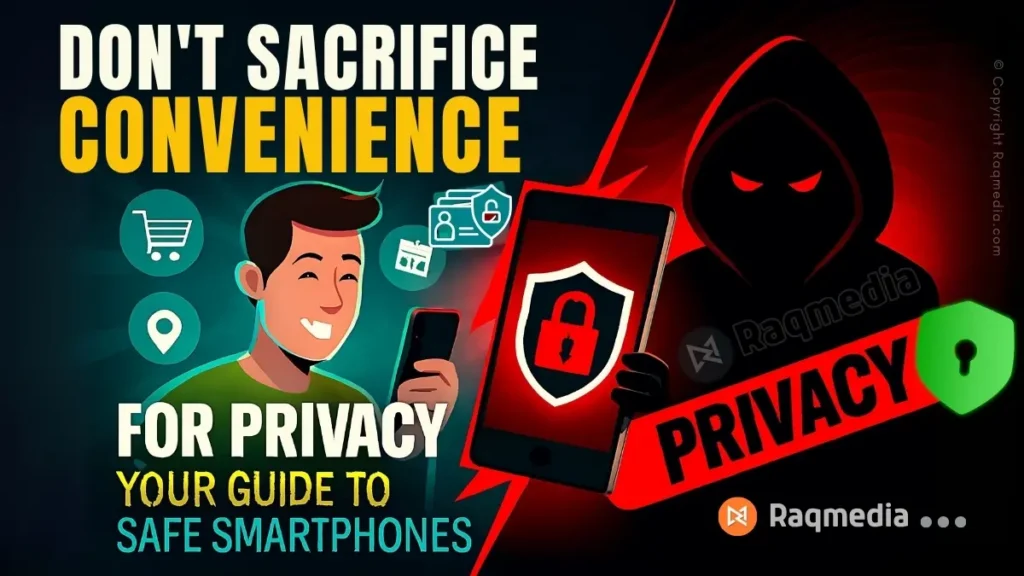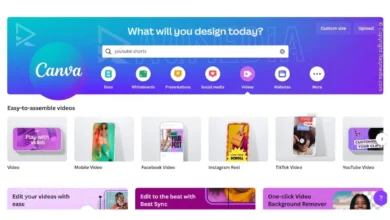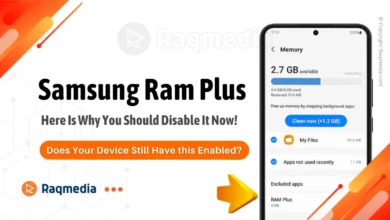We take them everywhere. We sleep next to them. We use them for everything from banking to sharing precious family photos. Our smartphones are our lifelines. But what if that very device, the one you trust with your most private moments, is also a pocket-sized spy?
The Only Safe Smartphones: Why Open Source Phones Are the Solution
It sounds like a plot from a thriller movie, but for many, it's a growing reality. Big Tech companies have built their empires on a simple trade: we get incredible convenience, and they get our data. But what if you didn’t have to make that choice? What if you could have a powerful, user-friendly phone that genuinely protects your privacy?
The answer lies in a new wave of devices known as privacy safe smartphones. And more often than not, the key to their security is being open source.
Let's dive into why your current phone might be a privacy risk and how open source phones offer a real solution.
Key Takeaways: Privacy Safe Smartphones at a Glance
- The Problem: Mainstream phones (iPhone, Samsung, Google Pixel) come with pre-installed, unremovable software that tracks your location, app usage, and personal data.
- The Solution: Privacy-focused phones often use open source operating systems, which allow for public scrutiny, meaning no hidden spyware.
- The Trade-Off: You might lose some ultra-convenient features (like seamless Google Assistant integration) but gain immense privacy and peace of mind.
- The Reality: The transition is easier than you think. Most everyday apps work fine, and the user interface is familiar.
- The Bottom Line: For anyone serious about digital privacy, open source phones are the most effective tool available today.
Why Your Current Smartphone is a Privacy Nightmare
Think about the last time you talked about wanting a new pair of shoes near your phone. Did you later see ads for those exact shoes? That’s not a coincidence. Major smartphone operating systems—iOS and Android (as shipped by Google, Samsung, etc.)—are designed to collect information.
The “Spyware” Built Right In
When we say “spyware,” it doesn’t always mean a malicious hacker planted it. In this case, it’s a feature, not a bug. Companies like Apple and Google include data collection modules deep within their operating systems. These modules are meant to “improve your user experience.” In reality, they are tracking:
- Your precise location, 24/7.
- Every app you open and how long you use it.
- Your browsing history and search queries.
- Your contacts, calendar events, and even typing habits.
The scariest part? You often can’t turn these features off completely. Even if you disable location services, telemetry data and other identifiers can still paint a detailed picture of your life. This data is tied to a unique hardware identity linked directly to you.
The Illusion of Choice: Apple vs. Google
Many people believe Apple is the privacy champion compared to Google. While Apple does have stronger marketing around privacy, the core issue remains. Your device is still a closed system. You have to trust Apple’s word that they aren’t collecting your data. With open source, you don't need to take anyone's word for it. The code is open for everyone to see and verify.
What Are Open Source Phones, Really?
The term “open source” can sound technical and intimidating. Let's break it down simply.

Open Source Means Transparent Code
Imagine if a restaurant had a glass wall into its kitchen. You could see every ingredient they use and every step they take to prepare your meal. You’d trust that meal a lot more, right?
Open source software is like that glass wall. The code that runs the phone's operating system is publicly available for anyone to inspect. Security experts, privacy advocates, and even curious users can look through it. They can verify that there are no hidden backdoors or secret data collection programs. If something sneaky is added, the community will spot it quickly.
It's Not Just for Tech Gurus Anymore
A common misconception is that open source phones are clunky, DIY projects for hardcore programmers. This is outdated. Companies have now created polished, user-friendly phones that run on open source foundations. The experience is as smooth as using any mainstream phone. The difference is what’s happening—or, more importantly, not happening—in the background.
How Open Source Phones Protect You: A Feature Breakdown
So, how does this transparency translate into real-world privacy? Let’s compare.
Comparison: Mainstream Phone vs. Open Source Privacy Phone
| Feature | Mainstream Phone (e.g., iPhone, Samsung) | Open Source Privacy Phone (e.g., with /e/OS, GrapheneOS) |
|---|---|---|
| Operating System | Closed-source (iOS, Google Android) | Open-source (AOSP-based, Linux) |
| Default Data Collection | Extensive and often enabled by default | Minimal to none; user-controlled |
| Pre-installed Apps | Often includes unremovable bloatware | Only essential, privacy-respecting apps |
| App Store | Walled garden (Apple App Store, Google Play) | Options include more open stores (like F-Droid) or sandboxed Google Play |
| Hardware Identity | Fixed, unique ID tied to your identity | Often can be masked or randomized |
| Who You Trust | The corporation (Apple, Google) | The verifiable, open-source code and community |
| Primary Goal | Maximize user engagement and data collection | Maximize user privacy and security |
The Power of AOSP and Custom Roms
Most privacy-focused phones use a core called the Android Open Source Project (AOSP). This is the barebones, open source version of Android that Google develops. What makes mainstream phones a privacy concern is what Google adds to AOSP – a suite of services called Google Mobile Services (GMS), which includes the Play Store, Gmail, and most importantly, Google Play Services, the primary data collector.
Privacy phones skip GMS. They use AOSP as a clean slate and then build a privacy-focused experience on top of it. Operating systems like GrapheneOS (known for its strong security) or /e/OS (known for its de-Googled convenience) do this brilliantly.
True Anonymity Online
Because these phones don’t create a strong, unchangeable hardware identity linked to you, they offer a level of anonymity that’s impossible on a standard phone. This is crucial for journalists, activists, or anyone living under an oppressive regime. But it’s also valuable for any regular person who simply doesn’t want their entire digital life cataloged and sold.
Addressing the Big Question: What About Convenience?
This is the biggest hurdle for most people. We’re addicted to convenience. The good news? The sacrifice is much smaller than you think.
“But I Need My Apps!”
You probably won't lose them. Most popular apps like Signal, WhatsApp, Spotify, and banking apps work perfectly on privacy phones. How? There are a few ways:
- Direct APK Downloads: You can often download the app file (APK) directly from the developer's website.
- Alternative App Stores: Stores like Aurora Store or F-Droid offer thousands of popular and open source apps.
- Sandboxed Google Play: Advanced systems like GrapheneOS allow you to install Google Play Services in a secure “sandbox.” This lets you run even the most stubborn apps, but it isolates them from the rest of your system, significantly reducing their data-harvesting power.
The User Experience is Familiar
If you can use an Android phone, you can use most open source phones. The interface looks and feels the same—home screens, app drawers, notification shades. You won’t need to learn a whole new way of doing things. The learning curve is minimal, making these devices suitable for everyone, from grandparents to teenagers.
What You Might Give Up
Let’s be honest. There are some trade-offs.
- Google-Centric Features: Seamless integration with Google Assistant, Google Pay, or certain smart home devices might be clunkier or unavailable.
- Certain Apps: Apps that are entirely dependent on Google's framework (like some older banking apps or certain games) might not work. However, this list is shrinking every year.
- Instant Updates: You might not get operating system updates pushed to your phone the same day they are released by Google or Apple. However, reputable privacy phone projects have regular and reliable security update schedules.
As public interest technologist Rob Braxman often says, “the sacrifice for privacy is pretty small now.” For the immense gain in peace of mind, many find it’s a trade-worth making.
Taking the Leap: How to Get Started with a Privacy Safe Smartphone
Ready to make the switch? You have two main paths.
Path 1: Buy a Pre-Installed Privacy Phone (Easiest)
This is the best option for most people. You buy a phone that comes with a privacy-focused OS already installed. It’s a plug-and-play experience.
- Popular Options: Companies like BraxTech (founded by Rob Braxman) sell “De-Googled” phones ready to go. Other providers offer phones with /e/OS or other systems pre-installed.
- Best For: Anyone who wants a hassle-free, out-of-the-box private experience.
Path 2: Install a Custom ROM Yourself (For the Adventurous)
If you’re technically inclined, you can buy a compatible phone (like a Google Pixel, which is ironically the best phone for GrapheneOS) and “flash” a new operating system onto it yourself. This requires following online guides and is more hands-on.
- Popular ROMs: GrapheneOS, /e/OS, CalyxOS.
- Best For: Tech enthusiasts who enjoy customizing their devices and want the absolute latest software.
Beyond the Phone: Building a Complete Privacy Ecosystem
Protecting your privacy doesn’t stop with your phone. To be truly secure, consider these companion tools, often offered by the same companies that make privacy phones:

- A Privacy-Focused VPN: Services like BytzVPN encrypt your internet traffic, making it much harder for your Internet Service Provider (ISP) or others to see what you’re doing online.
- A Secure Router: A BraxRouter or similar can filter out tracking attempts at the network level, protecting every device in your home, from your laptop to your smart TV.
Conclusion: It’s Time to Take Back Your Privacy
We’ve reached a tipping point. The convenience offered by mainstream smartphones comes at a steep cost: the erosion of our personal privacy. Our every move is being monitored, recorded, and monetized.
Privacy safe smartphones, particularly those built on open source principles, are the most powerful antidote to this surveillance economy. They prove that you don’t have to give up a modern, functional phone to protect your digital life.
The switch is easier than ever. The sacrifices are minimal. The reward—the feeling of true freedom and security—is immense. It’s the feeling of knowing your personal conversations, your location, and your browsing habits are yours alone.
Don’t sacrifice your privacy for convenience any longer. Explore the world of open source phones. Your digital freedom is worth it.









